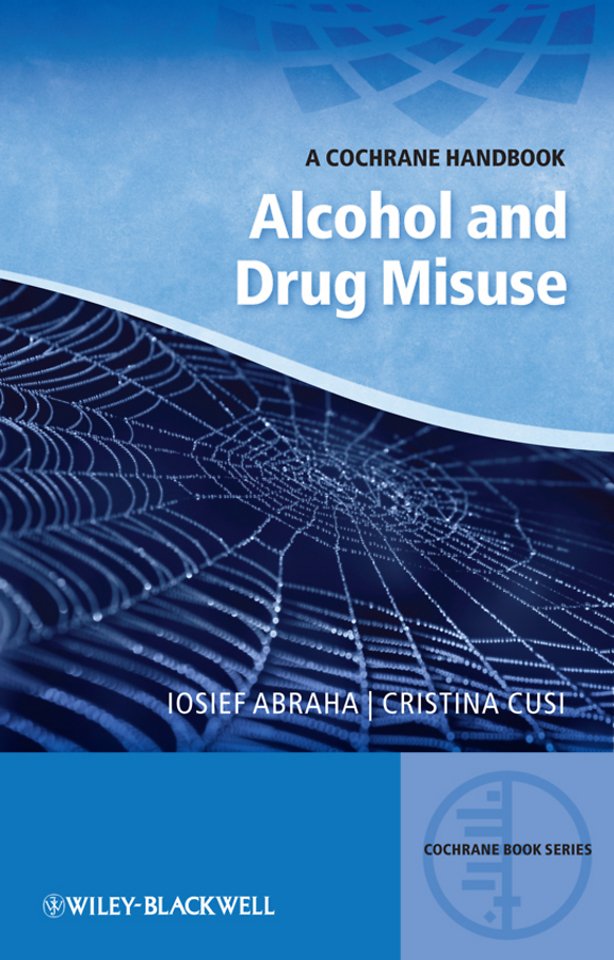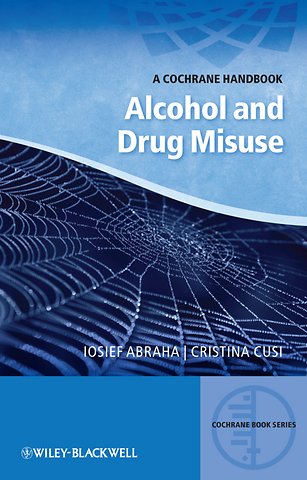

Alcohol and Drug Misuse – A Cochrane Handbook
A Cochrane Handbook
Samenvatting
Addiction to drugs and alcohol is an increasing problem that all clinicians have to deal with. This
Cochrane Handbook of Alcohol and Drug Misuse serves as a concise guide to the evidence base for relevant interventions, highlighting the key points of Cochrane reviews for the busy practitioner. It covers a wide range of pharmacological and psychosocial treatments for opioid, alcohol, cocaine and other stimulant and drug misuse, offering comprehensive coverage of interventions for drug and alcohol addiction.
Specificaties
Inhoudsopgave
<p>Preface, xi</p>
<p>Acknowledgements, xii</p>
<p>Part 1: Alcohol</p>
<p>Psychosocial interventions</p>
<p>Chapter 1: Effectiveness of brief alcohol interventions in primary care populations, 1</p>
<p>Chapter 2: Brief interventions for heavy alcohol users admitted to general hospital wards, 5</p>
<p>Chapter 3: Alcoholics Anonymous and other 12–step programmes for alcohol dependence, 8</p>
<p>Chapter 4: Mentoring adolescents to prevent substance use disorders, 10</p>
<p>Chapter 5: Universal school–based prevention programmes for alcohol misuse in young people, 12</p>
<p>Chapter 6: Universal multicomponent prevention programmes for alcohol misuse in young people, 15</p>
<p>Chapter 7: Universal family–based prevention programmes for alcohol misuse in young people, 17</p>
<p>Chapter 8: Social norms interventions to reduce alcohol misuse in university or college students, 19</p>
<p>Chapter 9: Psychosocial interventions for women enrolled in alcohol treatment during pregnancy, 22</p>
<p>Pharmacological interventions</p>
<p>Chapter 10: Benzodiazepines for alcohol withdrawal, 24</p>
<p>Chapter 11: Anticonvulsants for alcohol withdrawal, 27</p>
<p>Chapter 12: Acamprosate for alcohol dependence, 31</p>
<p>Chapter 13: Baclofen for alcohol withdrawal, 34</p>
<p>Chapter 14: Gamma–hydroxybutyrate for treatment of alcohol withdrawal and prevention of relapse, 36</p>
<p>Chapter 15: Psychotropic analgesic nitrous oxide for alcohol withdrawal, 40</p>
<p>Chapter 16: Efficacy and safety of pharmacological interventions for the treatment of alcohol withdrawal, 43</p>
<p>Chapter 17: Opioid antagonists for alcohol dependence, 46</p>
<p>Chapter 18: Pharmacologic interventions for pregnant women enrolled in alcohol treatment, 49</p>
<p>Part 2: Drugs</p>
<p>Psychosocial interventions</p>
<p>Chapter 19: School–based prevention for illicit substance use disorders, 51</p>
<p>Chapter 20: Interventions for prevention of substance use disorders by young people delivered in non–school settings, 54</p>
<p>Chapter 21: Case management for persons with substance use disorders, 56</p>
<p>Chapter 22: Motivational interviewing for substance use disorders, 59</p>
<p>Chapter 23: Therapeutic communities for substance use disorders, 62</p>
<p>Chapter 24: Interventions for drug–using offenders in the courts, secure establishments and the community, 64</p>
<p>Chapter 25: Psychosocial interventions for pregnant women in outpatient illicit drug treatment programmes compared to other interventions, 67</p>
<p>Cocaine dependence</p>
<p>Chapter 26 Psychosocial interventions for cocaine and psychostimulant amphetamine related disorders, 69</p>
<p>Chapter 27: Antidepressants for cocaine dependence, 71</p>
<p>Chapter 28: Antipsychotic medications for cocaine dependence, 74</p>
<p>Chapter 29: Anticonvulsants for cocaine dependence, 76</p>
<p>Chapter 30: Dopamine agonists for cocaine dependence, 78</p>
<p>Chapter 31: Disulfiram for the treatment of cocaine dependence, 82</p>
<p>Chapter 32: Efficacy of psychostimulant drugs for cocaine dependence, 84</p>
<p>Chapter 33: Auricular acupuncture for cocaine dependence, 87</p>
<p>Chapter 34: Psychosocial treatment for opiate dependence, 89</p>
<p>Chapter 35: Psychosocial and pharmacological treatments versus pharmacological treatments for opioid detoxification, 91</p>
<p>Chapter 36: Psychosocial combined with agonist maintenance treatments versus agonist maintenance treatments alone for treatment of opioid dependence, 94</p>
<p>Chapter 37: Alpha withdrawal, 96</p>
<p>Chapter 38: Buprenorphine for the management of opioid withdrawal, 99</p>
<p>Chapter 39: Buprenorphine maintenance versus placebo or methadone maintenance for opioid dependence, 102</p>
<p>Chapter 40: Methadone at tapered doses for the management of opioid withdrawal, 105</p>
<p>Chapter 41: Methadone maintenance at different dosages for opioid dependence, 108</p>
<p>Chapter 42: Methadone maintenance therapy versus no opioid replacement therapy for opioid dependence, 110</p>
<p>Chapter 43: Opioid antagonists under heavy sedation or anaesthesia for opioid withdrawal, 113</p>
<p>Chapter 44: Opioid antagonists with minimal sedation for opioid withdrawal, 115</p>
<p>Chapter 45: Oral naltrexone maintenance treatment for opioid dependence, 118</p>
<p>Chapter 46: Sustained–release naltrexone for opioid dependence, 121</p>
<p>Chapter 47: Heroin maintenance for chronic heroin–dependent individuals, 123</p>
<p>Chapter 48: LAAM maintenance versus methadone maintenance for heroin dependence, 126</p>
<p>Chapter 49: Detoxification treatments for opiate–dependent adolescents, 129</p>
<p>Chapter 50: Maintenance treatments for opiate–dependent adolescents, 131</p>
<p>Chapter 51: Maintenance agonist treatments for opiate–dependent pregnant women, 133</p>
<p>Chapter 52: Pharmacological treatment for depression during opioid agonist treatment for opioid dependence, 135</p>
<p>Chapter 53: Inpatient versus other settings for detoxification for opioid dependence, 138</p>
<p>Chapter 54: Psychotherapeutic interventions for cannabis use or dependence in outpatient settings, 140</p>
<p>Chapter 55: Pharmacological interventions for benzodiazepine mono–dependence management in outpatient settings, 142</p>
<p>Chapter 56: Treatment for amphetamine dependence, 145</p>
<p>Chapter 57: Treatment for amphetamine withdrawal, 147</p>
<p>Chapter 58: Treatment for amphetamine psychosis, 149</p>
<p>Chapter 59: Treatment for methaqualone dependence in adults, 151</p>
<p>Index, 153</p>